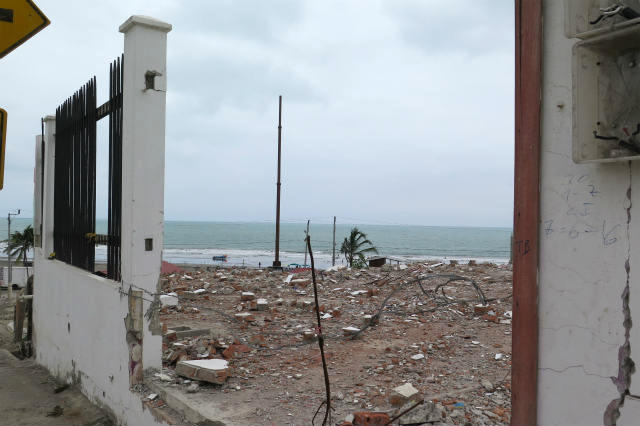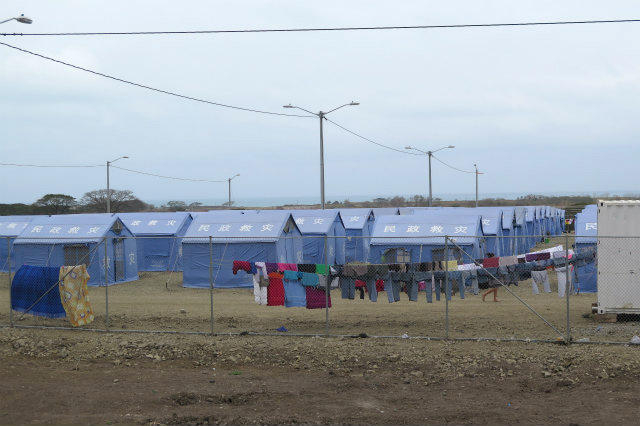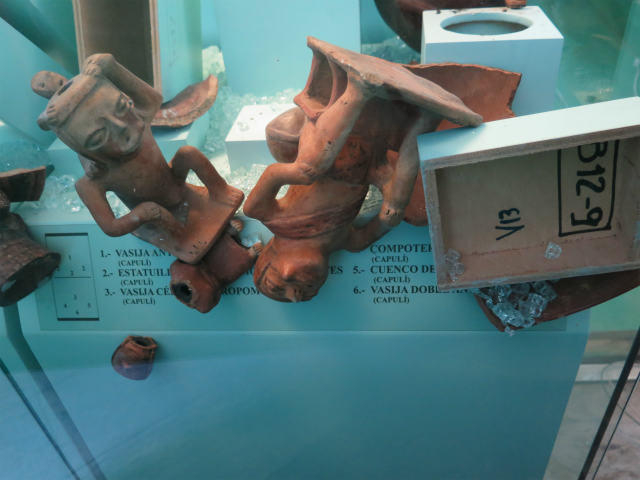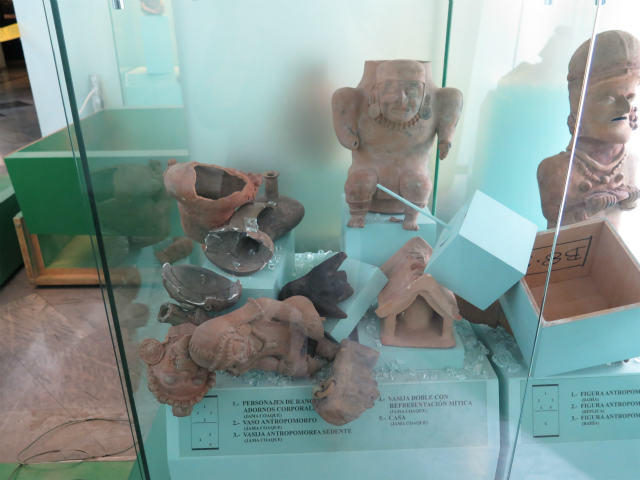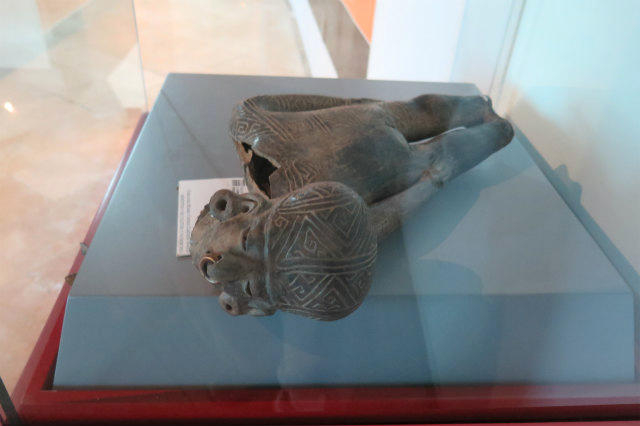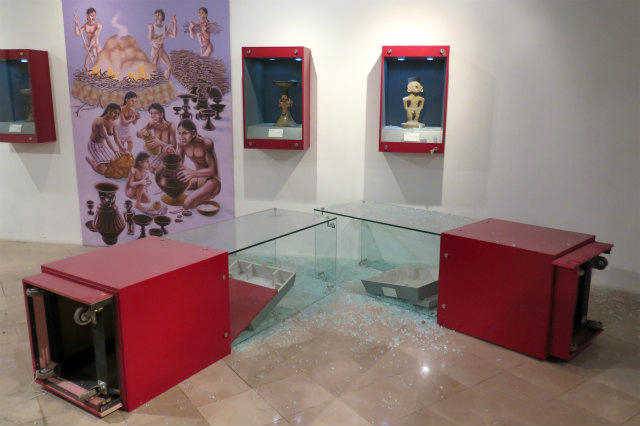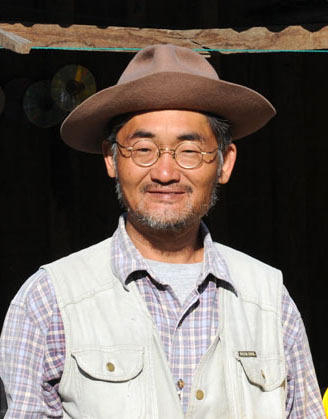Damage to Cultural Heritage from the 2016 Ecuador Earthquake: Museums and the Understanding of Cultural Diversity
Shuichi Odaira (Professor, Tokai University)
The Japan Foundation dispatched Professor Shuichi Odaira of Tokai University and a specialist in the archaeology of the Andes from September 2 through 15, 2016, to survey the damage caused to cultural heritage from the earthquake in Ecuador that occurred on April 16, 2016. Professor Odaira held a briefing session subsequently on December 16 of the same year at the Tokyo National Museum. In accordance with the request from the Foundation, he has shared with us a report based on his talk, provided here in digest form.
On April 16, 2016, a magnitude 7.8 earthquake struck Ecuador centered on the northern coast approximately 60 hours after the Kumamoto Earthquake. This earthquake caused extensive damage along the coastline of the country, and 671 people lost their lives. It also caused damages to important cultural heritage.
I went on a research trip organized and sponsored by the Japan Foundation to the affected areas in September 2016, to survey the damage to the exhibits and collections of museums in order to ascertain the need for support from Japan. I visited a total of 14 local museums and related facilities to carry out interviews and gave lectures in Quito and Santiago de Guayaquil entitled, "Catástrofes Naturales y Bienes Culturales: Prevenciones y Acciones en Japón" (Natural Disasters and Cultural Heritage: Preparations and Actions in Japan). During my travels, the nearer I got to the affected areas, it broke my heart to see the obvious and vivid signs of the earthquake still remaining despite the passage of five months.
Within the museums, there were places that remained exactly as they were on the day of the earthquake due to insurance and other reasons. Display cases had fallen over and shattered. Suspended glass plates which had been used for displays were broken and all the items on the plates had fallen to the floor and were smashed. There were also statues that had toppled over and were missing their heads. I was struck by a feeling of utter sadness seeing the proof of the lives of the indigenous people in a terrible mess, in contrast to their previous exhibits in beautiful display cases under spotlights for visitors to observe. The staff of the museums all expressed similar sentiments.
Left & right: Damaged exhibits (Museo y Centro Cultural Esmeraldas)
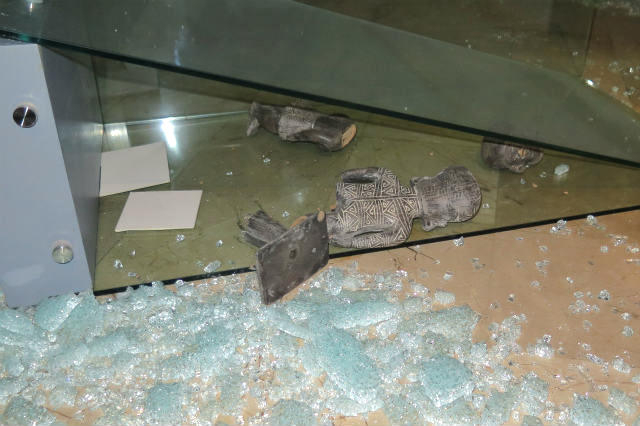
Top left: Figurine missing its head; Top right: Display case that has fallen and its glass shattered
Bottom: Fallen display case and damaged exhibits (all from the Museo y Centro Cultural Manta)
There were also museums where the building itself had been structurally damaged and could no longer be used. Despite that, the collections of those museums were still being stored there because there was nowhere else to take them.
In just the museums I surveyed, there were approximately 500 collection items that were damaged. The majority of those were earthenware and pottery excavated from archaeological sites predating the Spanish invasion. If one adds the damage to private collections as reported in the media, the total number of damaged items is likely to reach into the thousands.
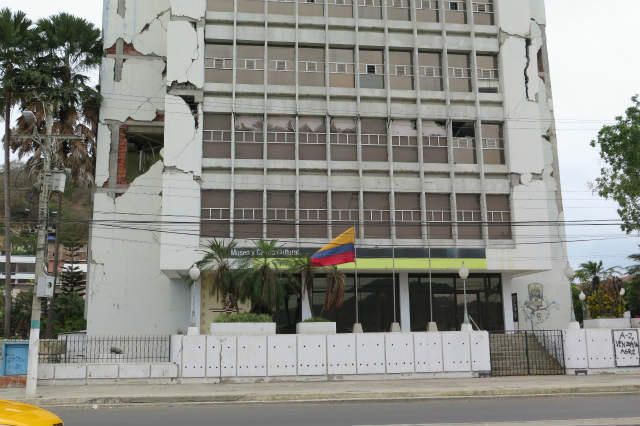
Museo Arqueologico y Centro Cultural Bahía de Caráquez. It sustained damage including broken windows and collapsed walls.
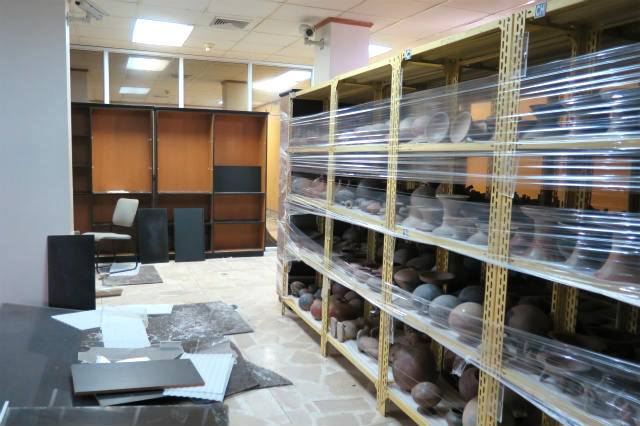
Fallen glass walls of the depository and the collection left without a place to evacuate (Museo y Centro Cultural Bahía de Caráquez)
History of the Indigenous People
The indigenous people of the Andes have gone through a dark era of their history since they were "discovered," "conquered," and colonized beginning with the expedition of Francisco Pizarro in 1524. These people were disrespected through that process, and Latin America was transformed into a land of exploitation. The treasures of the Andes, such as silver from Potosi Mines, were carried off to Europe during the rise of mercantilism that led directly to capitalism. While the nations of the Andes achieved independence in the 1820s, it did not mean the same for the indigenous people. It represented only the independence of the Creoles (Criollos) or the descendants of white Europeans born in the New World and liberation from the power of the Spanish Empire. There was little change in the circumstances of the indigenous people themselves.
However, interest in those indigenous people began to rise in the 1920s, because of the position of those people, comprising more than 40% of the population, which was an issue for the creation of a strong capitalist state. Coupled with these political forces, interest in indigenous people increased particularly among the intellectual class. In this trend called "indigenismo" (an ideology of indigenous advocacy), figures and the spirit of indigenous people had been made into works in fields, such as literature, visual arts, and music.
For example, a popular song of the people known to everyone in Ecuador, "Vasija de Barro" [unglazed pot], was written in 1950. The lyrics say, "We want to be buried like our ancestors, in the comfortable and dim confines of an unglazed pot..." Here, the sad feelings of the indigenous people are expressed beautifully in Spanish, which is not their native language. The "state of the people" is not representative of their true feelings. Rather, it is simply an image typically conjured up by the urban intelligentsia. With the creation of these works inspired by the growing interest, a certain characteristic image of the people was created and recreated. However, this did not lead to true mutual understanding and coexistence. Further changes emerged around the year 1970. Portions of land that had been taken from the indigenous population began to be returned, albeit slowly.
Museums and the Understanding of Cultural Diversity
Among the many countries in the Andes region, Ecuador began working to form a state based on cultural diversity from an early stage. Today, the very first article of their constitution clearly states that they are a nation that respects the rights and equality of diverse cultures and ethnic groups.
Certainly, the diversity of culture woven together in this single nation includes the history predating the Spanish invasion. History made by people who did not require writing as a tool of communication at the time is thus expressed and demonstrated through objects. As such, museums play an important role as a memory device in reaffirming the conditions which gave rise to the state. The leftist Rafael Correa's administration, formed in 2007, has proactively worked to restructure the national museums based on that thinking. Some of the institutions were renamed as "museum and cultural centers" to reestablish them as cultural-arts complexes with citizen participation. Such museums came alive particularly on weekends when large audiences, including children, attended programs at facilities that proactively hosted traditional craft workshops. However, just as these changes were occurring, the 2016 Ecuador Earthquake struck.
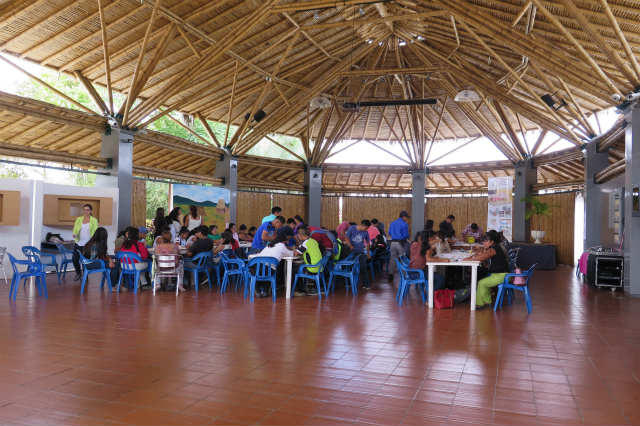
People gathered at a museum-hosted event (Museo Amantes de Sumpa)
The restoration work of the damages to cultural heritage is not proceeding smoothly. This is not only because the number of archeologists and other specialists is limited, but also because there is a state of confusion due to limited past experience with earthquakes.
In Japan, the Act on the Promotion of International Cooperation for Protection of Cultural Heritage Abroad was promulgated and put into effect in 2006, and the Japan Consortium for International Cooperation in Cultural Heritage was established to enhance implementation and ensure smooth cooperation with the Act. From a historical perspective, I believe there is great value in Japan, as a country with a wealth of experience in earthquakes and having a cultural diversity similar to the Andes region, to lend a hand and think together with the people in Ecuador, on the true meaning of cultural heritage and the meaning of cultural diversity.
(All photographs taken by the author)
Shuichi Odaira
Professor at Tokai University Shuichi Odaira was born in Iwate Prefecture and graduated from Graduate School of History and Archaeology of Waseda University. His specialties are cultural anthropology, Latin American studies, and Andean prehistoric studies. He has been carrying out archaeological investigations and ethnographic studies in Ecuador and Peru since 1992. He is also a member of the Subcommittee for Latin America and Caribbean of the Japan Consortium for International Cooperation in Cultural Heritage. He has co-authored Ekuadoru wo Shiru Tame no 60 sho [60 chapters to learn about Ecuador] (Hidekazu Araki, ed. Akashi Shoten) and Tasha no Teikoku: Inka wa Ikanishite "Teikoku" to Nattaka [The Empire of the Others: How the Incans Became an Empire] (Yuji Seki, Hidefuji Someda; eds. Sekai Shisosha).
Back Issues
- 2024.2.19 Movie Theaters aroun…
- 2024.2.19 Movie Theaters aroun…
- 2023.4.24 The 49th Japan Found…
- 2022.10.24 Inner Diversity <2> …
- 2022.10. 5 Living Together with…
- 2022.6.13 The 48th Japan Found…
- 2022.6. 3 The 48th Japan Found…
- 2021.11.29 Crossing Borders, En…
- 2021.3. 5 Crossing Borders, En…
- 2021.2. 8 Crossing Borders, En…


